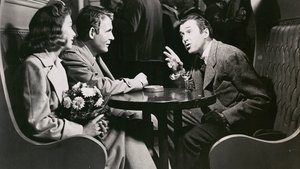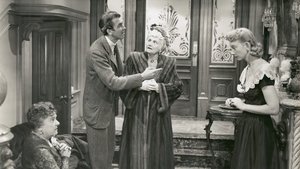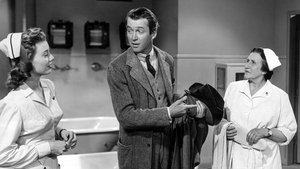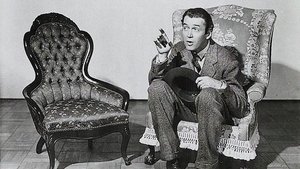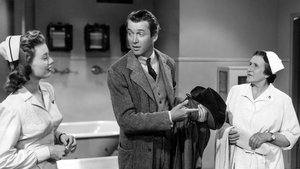Contact: [email protected]
Video Sources 0 Views

Synopsis
[ez-toc]




Introduction
The world of cinema is no stranger to controversy, and one topic that has sparked debates for decades is the process of colorization. In recent times, classic films have undergone a transformation, with black and white masterpieces being infused with vibrant hues. One such iconic movie that has been thrust into the spotlight is “Harvey Colorized,” a timeless tale directed by Henry Koster in 1950. In this article, we will delve into the depths of Harvey Colorized, exploring its impact on the film industry, the controversy surrounding colorization, and a detailed review of the colorized version of this cinematic gem.
Read Media File Transfer Agreement: Terms and Conditions
Read FAQ
The History and Significance of Harvey Colorized
“Harvey Colorized” originated as a Pulitzer Prize-winning play written by Mary Chase. The story revolves around the eccentric Elwood P. Dowd, brilliantly portrayed by James Stewart in the film adaptation. Elwood’s best friend, however, is not a person but a six-foot-tall invisible rabbit named Harvey, a creature only he can see – a concept that adds whimsy and depth to the narrative.
Mary Chase’s creation, both witty and poignant, found success on the stage and later made its way to the silver screen. Released in 1950, “Harvey Colorized” became an instant classic, garnering praise for its unique blend of fantasy and social commentary.
Understanding Colorization: From Technique to Controversy
Colorization is a process that involves adding color to black and white films, a practice that has sparked a heated debate within the film community. In the early days, colorization was a manual and time-consuming process, with artists meticulously hand-painting each frame. As technology evolved, modern digital techniques emerged, allowing for more efficient and precise colorization.
The debate between purists, advocating for the preservation of films in their original black and white state, and proponents of color restoration using technology, remains a contentious issue. “Harvey Colorized,” once again thrust into the spotlight, became a battleground for this ongoing cinematic discourse.
The Artistic Vision: Interpreting Harvey in Color
The infusion of color into “Harvey Colorized” raises intriguing questions about the artistic vision behind the film. How does color enhance the portrayal of fantasy elements, particularly the invisible rabbit, and how does it influence the audience’s perception of sanity and reality within the narrative?
In the colorized version of “Harvey,” the fantasy elements come to life with a vibrant palette that breathes new energy into Elwood’s imaginary world. The choice of colors becomes a visual language, speaking to the whimsy and charm of Harvey’s presence, while also subtly influencing the audience’s interpretation of Elwood’s sanity.
The Colorization Process: Balancing Technicality and Creativity
The technical process of colorization is a fascinating journey that combines meticulous research, frame-by-frame editing, and color grading. Modern advancements have introduced AI software into the equation, expediting the workflow and ensuring accuracy in color reproduction. The delicate balance between technical precision and creative interpretation is crucial in preserving the essence of the original work while injecting new life into it.
As we explore the colorization process of “Harvey,” we uncover the intricate dance between the technological advancements that make it possible and the artistic decisions that shape the final product.
Harvey Colorized: Reviving a Cinematic Classic
Now, let’s dive into the heart of the matter – the colorized version of “Harvey.” How does the infusion of color impact the overall viewing experience, and how does it compare to the original black and white release?
In the colorized iteration, the palette chosen breathes warmth into the film without overshadowing its classic charm. The fantasy elements, notably Harvey, are brought to life with a vibrancy that enhances the whimsical nature of the narrative. The contrast between Elwood’s perception of reality and the colorful world he envisions is stark, creating a visual feast for audiences.
While purists may argue that the original black and white version holds a certain timeless charm, the colorized adaptation provides a fresh perspective, inviting a new generation of viewers to experience the magic of “Harvey” in a way that feels contemporary and engaging.
Preservation vs. Adaptation: The Ongoing Debate
The tension between preserving a film’s integrity and adapting it to suit modern audience preferences is an ever-present challenge. Colorization is just one facet of this broader debate, with digital enhancement and restoration techniques constantly pushing the boundaries of what is deemed acceptable.
“Harvey Colorized” becomes a microcosm of this debate, forcing us to confront the question of how far we are willing to go in the name of cinematic adaptation. As technology continues to advance, filmmakers and audiences alike must grapple with the delicate balance between honoring the past and embracing the future.
The Legacy of Harvey Colorized
The impact of “Harvey Colorized” extends beyond the confines of a single film. It becomes a catalyst for discussions surrounding the role of colorization in the film industry. Has it opened doors to a new era of restoration, or does it threaten to overshadow the artistic intent of the original creators?
The legacy of “Harvey Colorized” lies in its contribution to the ongoing dialogue about the preservation and adaptation of classic films. It prompts filmmakers, historians, and audiences to reassess their perspectives on the ever-evolving nature of cinema.
In Conclusion
As we wrap up our exploration of “Harvey Colorized,” it becomes evident that the infusion of color into classic films is not merely a cosmetic change but a nuanced reinterpretation of cinematic history. The controversy surrounding colorization is a reminder that the intersection of art and technology requires delicate navigation.
While “Harvey Colorized” breathes new life into an old classic, the journey is not without its challenges. As audiences, let us appreciate the diverse interpretations offered by both the original black and white version and the colorized adaptation. It is through this nuanced appreciation that we can truly understand the potential benefits and drawbacks of colorization in the realm of cinema.
In the ever-evolving landscape of film, “Harvey Colorized” stands as a testament to the enduring power of storytelling, capable of transcending the boundaries of time and technology. As we embark on this cinematic journey, may we continue to celebrate the rich tapestry of old movies while embracing the innovative spirit that propels them into the future.


